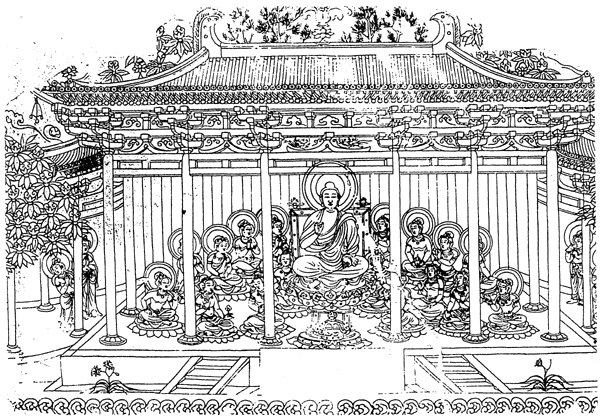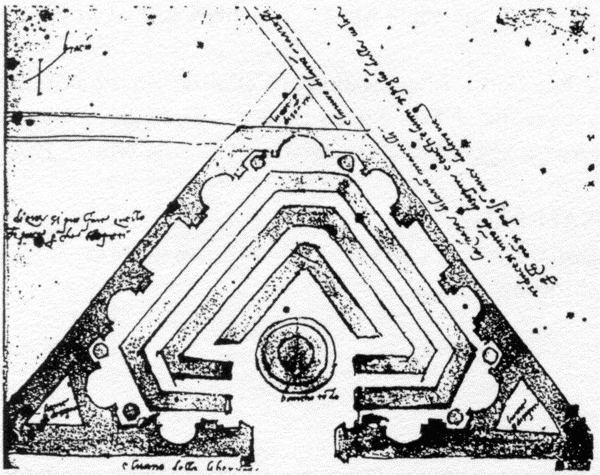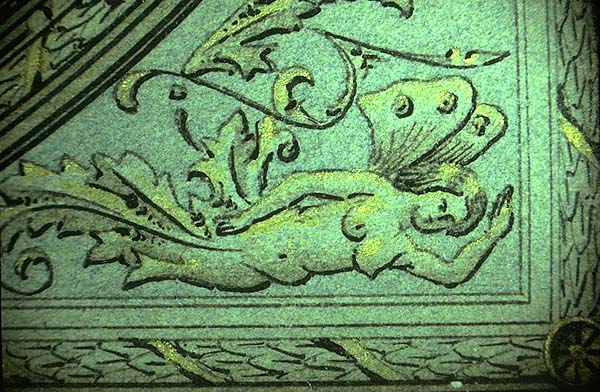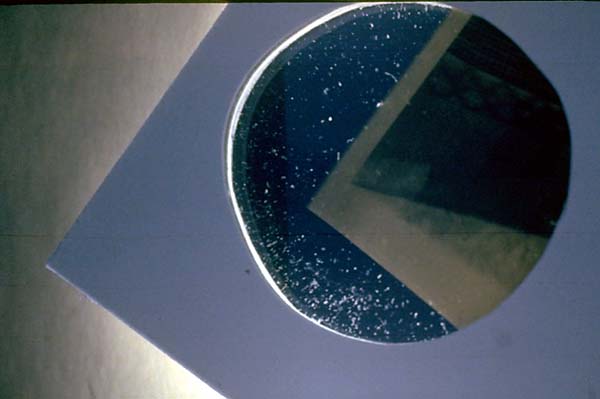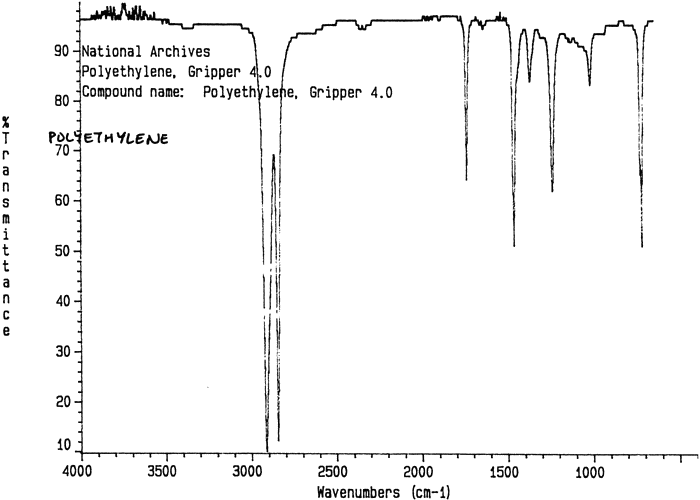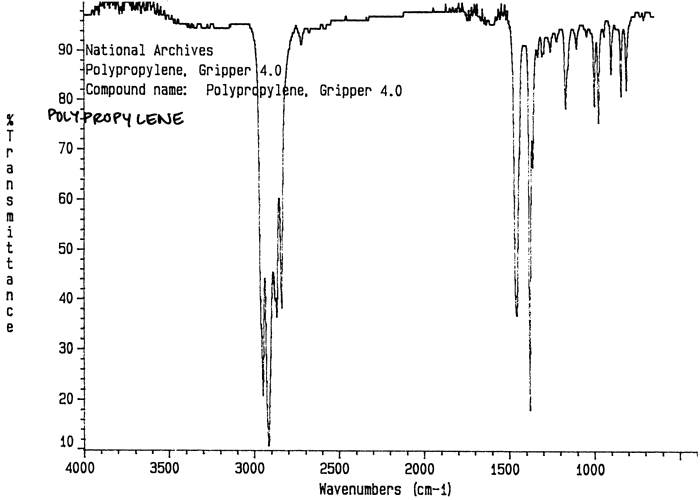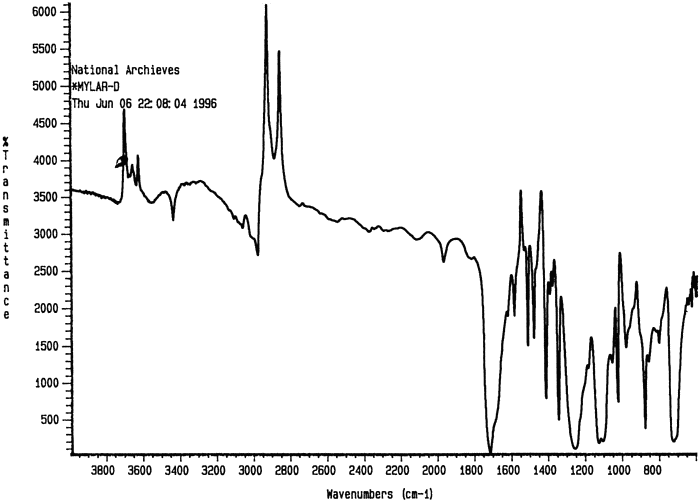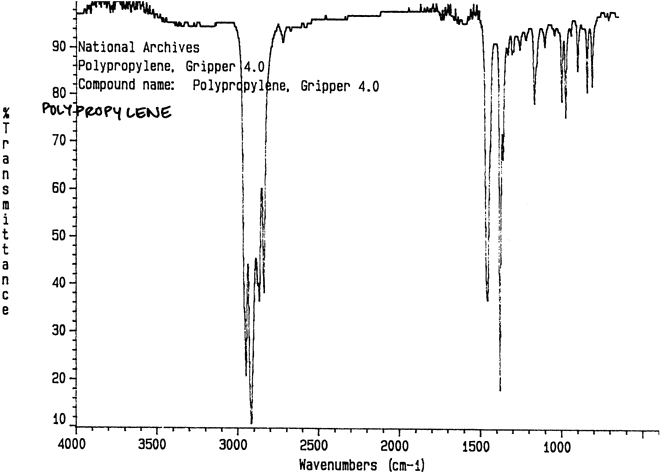Transparent Drafting Films: Profiles for Preservation
by Susan PageArchitectural Drawings And Reprographics
Architectural drawings exist from as early as the 5th Century A.D. in China. That is about the time paper was invented. Architects and engineers have historically used a wide variety of supports for their plans. Some examples are: silk, cotton, plaster, sand, linen, and paper.
Today new kinds of supports proliferate, especially those rising from modern reproduction methods. These "second originals" appear on a variety of engineering drafting/reproduction films.
In the past, most local governments required that architects and engineers deposit a "permanent" i.e. record copy of architectural plans in building permit departments. Linen was used as the support for these deposited drawings.
Architectural/drafting cloth, or linen, is a thin, handkerchief weight, starch coated, calendered cotton fabric. Linen or drafting cloth has largely been supplanted today as a medium for original and copies of architectural drawings by a plethora of synthetic materials. In light of these changes, two questions face Archivists and Conservators of Architectural/Cartographic records:
What are the modern copy materials in our collections and are they at risk?
What materials can we choose to make archival copies of our records?
This paper provides suggestions to:
identify what you have or will get in your architectural records collection
select transfer or copy materials for reproducing architectural draftings
Historic Processes
The preservation of original architectural drawings and prints is a problem for archivists/curators. Knowledge of the materials and identification of the processes represented in a collection are important first steps in determining preservation needs and approaches. One preservation option is to transfer/reproduce a fragile/unstable drawing to a more permanent format. The following is a brief list of common historical processes represented in many architectural/cartographic collections. For a more detailed description, see Price, 1995.
Blueprint Process
Discovered in France, perfected in England, use began in the 1870's. The photo-reproductive process involves putting sensitized paper in contact with a translucent original and exposing this package to light. Relatively stable image, permanence/stability depends on processing. Some processing may make paper brittle.
Van Dyke/Brownprint/Sepia
Invented by Van Dyke in 1901, paper is sensitized with silver and developed in sodium thiosulphate. These prints appear as both negatives and positives.
Diazotype
Discovered late in the 19th Century, diazo copies largely replaced blueprints. Sensitized paper and translucent original drawing are exposed to light and ammonia gas. Diazo is inexpensive but unstable. The diazo microfilm process, however, may be stable. Diazos are very sensitive to light and require separate housing to prevent harmful off gassing (especially of photographs).
Xerography
Electrostatic copies appeared in 1948. This process makes an image of the original using solvent, heat, or light to fuse a toner powder image formed by electrostatic charge. Paper electrostatic copies preserve well if fused well to archival bond paper, (Jones, 1990). Matte or transparent polyester electrostatic copies are NOT permanent copies, because of uncertain bonding og image to support.
CAD
Computers have been used since the 1950's. Computer Aided Design was introduced in the 1980's to solve complicated engineering problems. CAD is fast and can be manipulated easily. Ink-jet and laser printers combine with computer generated drawings. CAD must meet preservation standards for both media and support.
Polyester Drafting Film Used For Preservation
"The hydrolytic stability of PET film, (polyethylene terephthalate), was investigated [by the NBS, 1989] and it was concluded that PET should retain useful properties for over 500 years at 20° C and 50% RH." (Smith, L., 1991)
Qualities to look or ask for in selecting POLYESTER -PET film for preservation: uncoated biaxially oriented (cast flat from a horizontal extruder and stretched in both directions to orient the molecules and permanently "set" the film)
Archival Originals And Photo-Reproductions:
Silver halide emulsion coated polyester film (PET) properly processed provides archival copies, (see ANSI NAPM IT9.1, 1996)
CAVEAT: Photo copies on PET are not permanent. PET scratches easily, the toner can flake, and comes off in water.
PET drafting films for original drawings and reproductions range in thickness from 2 to 20 mil, are translucent so they can readily be copied or printed, have a chemically or physically prepared matte surface, and a layer to accept drafting with a hard pencil or ink.
Preservation of originals and photo-reproductions depends on conditions of processing, storage, and handling. Preservation of photographically processed originals and photo-reproductions depends in large part on the care taken during processing. The most stable copy is obtained from "fixed line" silver halide emulsion on polyester film (treated with a gelatin emulsion/silver halide surface and properly processed), stored at 70° F at 40% RH (ANSI IT9.11, 1994) ) All images must be properly fixed and all processing chemicals washed out to obtain archival photo-reproductions. "Wash-off" prints consisting of a water soluble starch coating are not permanent.
Manufacturer
Clear polyester drafting films are available from manufacturer with emulsion on one side.
gelatin emulsion/silver halide coating
processed drafting film produces transparent copy
Matte polyester films are available from manufacturers with emulsion on one or both sides.
chemically toothed matte surface
gelatin emulsion/silver halide
gelatin emulsion/silver halide/starch layer (wipe off)
Emulsion coatings are applied in one of two ways:
air knife coating
even flow dipping (Page, 1992)
Identification Of Polyester Drafting Films
The first step in the preservation of polyester drafting films in architectural and cartographic collections is identification.
Examination:
There are several tools available in identifying potentially unstable film-based materials in architectural collections. Conservators typically rely on such physical clues as:
planar distortion or cockling
yellowing or discoloration
odor--vinegar syndrome
polarization test: red or green interference colors indicate polyester. (Fischer and Robb, 1993)
Analytical Testing
Both examination and analysis can be extremely useful in selecting new films for reproduction for preservation purposes. However, decisions to employ destructive tests for the purpose of identification of original items in collections must be made within the context of institutional policy and the nature and value of the objects in question.
Infrared spectroscopy is a popular analytic method for identifying organic materials. This technique transmits an infrared beam through a sample. The sample's components absorb infrared at wavelengths that provide a profile or "fingerprint"
FTIR spectrometry (Fourier Transform Infrared Spectrometer) is used by conservators and conservation scientists because it is very sensitive and requires smaller samples (approximately 1 cm x 4 cm or even smaller if a micro spectrophotometer is used) than other traditional methods. The National Archives Research and Testing Laboratory used a Nicolet 550 Magna FTIR with an ATR accessory to conduct tests on non-record materials. Once the profile for PET, polyester terephthalate (uncoated, biaxially oriented, and polished) was recorded it was added to the Library to match known and unknown plastics. Represented among the known samples are: acetate, polyethylene, polypropylene, cellulose tri-acetate, polyvinyl chloride and polystyrene. The Research and Testing Laboratory maintains an expanding FTIR Library of known samples.
Test results do not indicate an endorsement of any products by the National Archives.
References
Fischer, Monique and Robb, Andrew, "Identification Chart and Guidelines for Care of Filmbase Photographic Materials," Topics in Photographic Preservation Vol. 5. AIC Photo Materials Group, Winter, 1993
Jones, Norvell M.M., "Archival Copies of Thermofax, Varifax, and Other Unstable Records." Technical Information Paper no. 5. Washington, D.C.: National Archives and Records Administration, 1990.
Page, Susan, "Transparent Drafting Films", Poster, Preprints, IPC, Manchester, England, 1992.
Price, Lois Olcott, "The History and Identification of Photo-Reproductive Processes used for Architectural Drawings Prior to 1930", AIC Photo Materials Group, Topics in Photographic Preservation , 1995.
Reilly, Julie A., "Celluloid Objects: Their Chemistry and Preservation", JAIC 30 (1991):145-162.
Schrock, Nancy Carlson, "Conserving Architectural Drawings and Oversize Works of Art on Paper, A Bibliography", 1992.
Smith, Leslie, "Factors Governing the Long-term Stability of Polyester-based Recording Media." Restaurator, Vol 12, 1991
Taylor, Thomas O., "Protective Plastic Films in Philately: How Do We Find "the Right Stuff "? The American Philatelist, March, 1988.
Walsh, Betty, "Identification of Cellulose Nitrate and Acetate Negatives by FTIR Spectroscopy", Topics in Photographic Preservation Vol. 6 AIC Photo Materials Group, Winter, 1995..
Figures
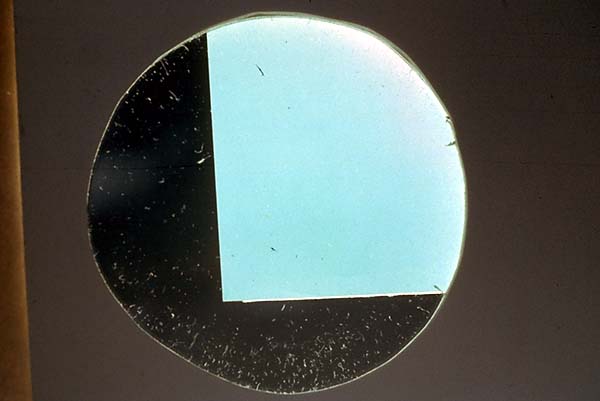
Fig. 5 PET film viewed through sandwich of polarizing filters
Fig. 6. Cellulose acetate film viewed through sandwich of polarizing filters
Susan PageNational Archives and Records Administration
Publication History
Received: Fall 1996
Presented at the Book and Paper specialty group poster session, AIC 24th Annual Meeting, June 10-16, 1996, Norfolk Virginia.
Posters for the specialty group session are selected by committee, based on abstracts and there has been no further peer review. Papers are received by the compiler in the Fall following the meeting and the author is welcome to make revisions, minor or major.
